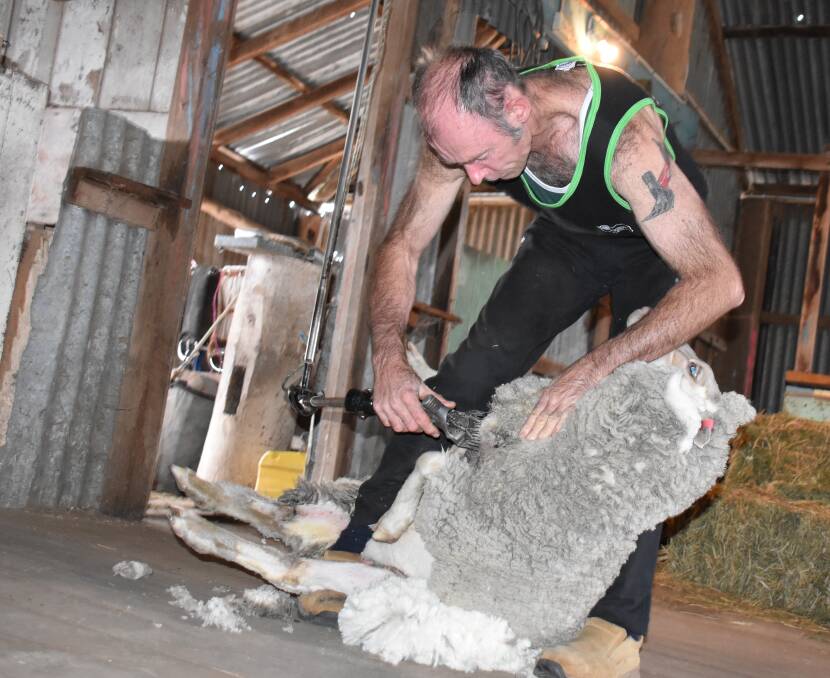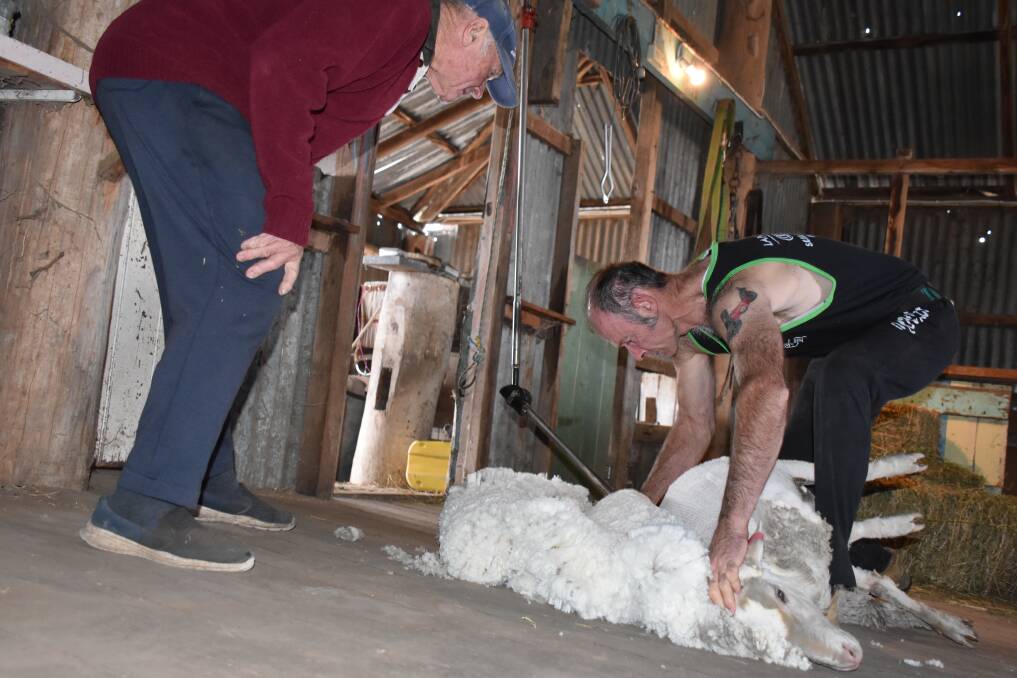
Gun shearer Cameron Griffiths opted to get himself branded recently with a tattoo to mark his 40 years of shearing, also returning to the very spot he sheared his first sheep to celebrate the occasion with friends and family.
Subscribe now for unlimited access.
$0/
(min cost $0)
or signup to continue reading
Cameron was taught to shear by his father Eric – in the old timber shearing shed on the family property Kabonne just outside Tenterfield – sending his first completed sheep down the shoot back on May 12, 1978.
He conservatively estimates there have been in excess of 600,000 more shorn sheep down the shoot in the intervening years as he ceremoniously marked the anniversary on May 12, 2018. He worked out the numbers based on shearing 15,000 a year, but said some years he sheared 25,000.
Cameron is the fourth-generation shearer in the Griffith family, going on to win the prestigious Diamond Shears in both 1995 and 1997 (and wife Tracey has the diamond rings to prove it).
He still competes, finishing fourth at the Goondiwindi Show and fifth at St George the previous weekend. He has the Brisbane Ekka in August in his sights before heading off to Perth in September for the Sports Shear Nationals.
He still puts in the hard yards to keep in form, recently tacking 9000 wethers over three sheds in eight weeks of shearing west of Stanthorpe.
These days much of the shearing is done in the form of working holidays, with six weeks of shearing on the road at Flinders Ranges in South Australia earlier this year more than paying for the trip. Tracey said she ‘filled in’ as a roustabout during a one of the stints in South Australia, but doesn’t think she’d be volunteering for that job again.
Cameron still does six or seven months of shearing a year. After four decades of shearing, fencing and other very manual farm tasks he said his back is holding up pretty well, which he puts down to the easy style of shearing he has developed over the years.
“It puts less pressure on the sheep, and therefore less pressure on the back,” he said.
“Dad showed me the best technique at the time, and then in 1982 I participated in a shearing improvement school. Of the 10 shearers, I was named best shearer of the shed.”

Since then shearing has taken Cameron to every state in Australia, and to New Zealand for the Merino Shearing Championships in Alexandra.
Along the way he competed in agricultural shows for 18 years and won 35 open championships (including the Australian title in 1995), plus of course the two Diamond Shears wins.
It’s a vocation he’d recommend to anyone starting out.
“If I had my life over again, I’d be a shearer,” he said, “but I wouldn’t have stayed around Tenterfield for as long.”
Cameron said there are lots of opportunities for shearers in Australia and overseas. Big competitive events like the Diamond Shears can also be lucrative. Camerons said his winnings were in the order of $8000 with one of the stones turned into a ring for Tracey valued at $4,500 alone, and return airfares and the winner’s blazer thrown in.
“These are prestige events,” he said.
Handpieces have come a long way over the 40 years Cameron has been shearing, and the single overhead shaft has given way to single electric stands.
“It’s safer, and more user-friendly,” he said.
The newer handpieces give a superior cut, and while he learned on narrow gear he transferred onto the wider combs when they hit the market in 1984, although he remembers a lot of resistance in the industry. He feels that may have been due to the fact that the innovation came out of New Zealand, inflaming long-held rivalry.
He’s pretty confident he won’t see robotic sheep shearing threatening his livelihood anytime soon, unless they can clone sheep out of the same mold so that they’re all identical.
“Every Merino is different, particularly in the development (of wool) up the neck,” he said.
“They need a (human) shearer.”
Cameron is in the throes of organising with AWI (Australian Wool Innovation) to take up an instructor’s role in Queensland sheds working with improver shearers on their technique to avoid those second cuts.
“It’s all about position,” he said, from his long experience.
“Get the sheep comfortable, and the shearer can do their work.”
He said the biggest stressor can be sheep with full stomachs who are uncomfortable being maneuvered into position. He always negotiates with the grazier to have the sheep off-feed for at least 12 hours, and everyone benefits.

